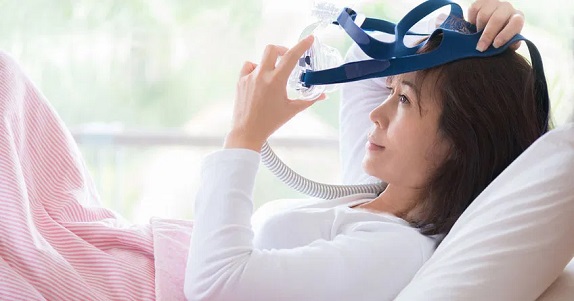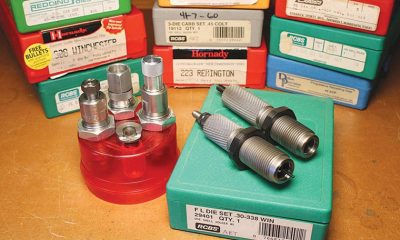Health & Beauty
The Benefits BiPAP Machines Offer for Sleep Apnea Sufferers
Poor sleep is a common condition among Aussies. About one in three people regularly struggle with their sleep and one of the main causes for that is sleep apnea. It is a dangerous sleep disorder where the individual stops breathing during sleep. Fortunately, sleep apnea is extremely treatable through the use of CPAP or BIPAP therapy.
When it comes to determining which therapy is better for treating sleep apnea, both machines are suitable. They are designed for the same purpose and function: both use filtered, pressurized air to keep the airway open so it doesn’t collapse during sleep. The difference between BIPAP and CPAP is that CPAP uses a continuous, steady pressure, regardless of whether the patient is inhaling or exhaling. BIPAP equipment provides a dual pressure setting, so the inspiratory setting can be set at a higher pressure than the expiratory setting. CPAP is often the first option for treating sleep apnea, but some people struggle to breathe against the constant pressure delivered by the CPAP. For these people, a bipap machine can be a more effective sleep apnea treatment.
What is a BIPAP Machine Used For?

By providing a variable inspiratory pressure and a lower expiratory pressure, BIPAP devices make breathing easier while the expiratory pressure makes it easier to exhale. This is especially important when pressures are high teens or low twenties as breathing against pressure in those ranges can be very difficult. Physicians may also prescribe the use of a BIPAP device in some cases of congestive heart failure. Patients with complex lung-related diseases can also benefit from BiPAP assisted breathing therapy. The pressure settings will be determined by a sleep test and the machine provider will set the pressure levels based on the physician’s prescription.
Benefits of Using a BIPAP Machine

BIPAP is a Better Treatment for Individuals With Breathing Restrictions
Those who suffer from this condition tend to have trouble getting enough oxygen and expelling enough CO2. BIPAP can improve a person’s gas exchange, helping the body function more efficiently. Clearing the body’s CO2 can also help prevent a dangerous and sometimes deadly condition called hypoxia.
BIPAP Makes Exhaling Easier

This is an extra benefit for individuals who need higher inspiratory pressure. When higher-than-average air pressure is recommended to help keep a person’s airway from collapsing, individuals tend to find exhaling against that pressure challenging and uncomfortable. Experts explain that working to exhale is no fun, and it may actually lead to higher blood CO2 level. The majority of people with a need for higher pressure end up switching from CPAP to BIPAP.
BIPAP Includes an Optional Breath Timing Feature

This feature measures the person’s sleep respiration rate and sets an ‘ideal rate’ for how often they should inhale and exhale over a set period of time. When a person is asleep, if they go too long without inhaling, the BIPAP device will increase air pressure temporarily. This will force the individual to take a breath. Once the person resumes their normal rate, the automatic setting will return to the previous air pressure level.
How to Connect Oxygen to BIPAP Machine
Typically, a BIPAP device will take ambient air, pressurize it, run it through special filters to keep outside bacterial and allergens and then deliver this oxygen to the patient. However, there are some cases where patients with sleep apnea are prescribed to use therapeutic grade oxygen therapy. The therapy is also delivered through the BIPAP device, which pumps therapeutic quality oxygen into the mouth, or nose and mouth of the patient, depending on the type of mask he/she uses.

Patients with the following conditions are most likely to require supplemental oxygen:
- Chronic Obstructive Pulmonary Disease (COPD) patients;
- Patients who have critically low levels of oxygen in their bloodstream during sleep;
- Emphysema patients;
- Lung cancer patients.
In order to transfer oxygen from the supply to the patient through the BIPAP device, a bleed-in adapter is required. Although the adapter can be attached easily to the device and to the oxygen tubing, it is important that patients pay special attention to the instructions in the manufacturer’s leaflet. After the adapter has been attached property, all patients have to do is turn on their device and then the oxygen unit. But there are plenty of innovative BIPAP masks available on the market today that feature an oxygen adaptor. When the mask is equipped with such a special oxygen port, all patients have to do is connect the oxygen tubing.
BIPAP Side Effects
BIPAP therapy is considered to be very safe. Most problems that are related to the therapy are typically due to the fact that the facemask is either fitted too tightly and is damaging the user’s skin, or it’s fitted too loosely, causing pressure air to leak from the mask. Still, some people have reported mild bloating of the stomach, dry mouth, sinus pain and eye irritation. Consultations with a doctor are necessary if any of these side effects occur.
Writing for the blog since 2012, Chris simply loves the idea of providing people with useful info on business, technology, vehicles, industry, sports and travel – all subjects of his interest. Even though he sounds like quite the butch, he’d watch a chick flick occasionally if it makes the wife happy, and he’s a fan of skincare routines though you’d never have him admit that unless you compliment his impeccable skin complexion.

























